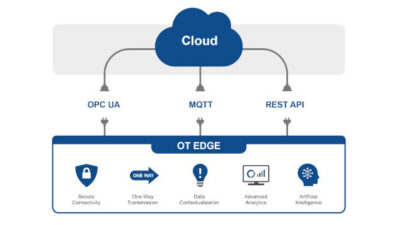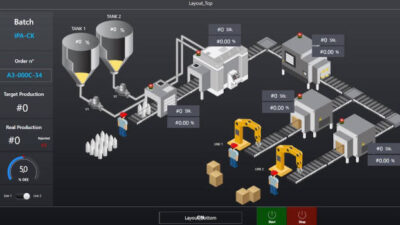Enterprise resources planning (ERP) systems are important because they integrate, automate, and create processes that capture—and fundamentally change—how business works. ERP systems therefore require special care and feeding. Just implementing an ERP system can uncover a wealth of new, unplanned work for everyone.
Enterprise resources planning (ERP) systems are important because they integrate, automate, and create processes that capture—and fundamentally change—how business works.
ERP systems therefore require special care and feeding. Just implementing an ERP system can uncover a wealth of new, unplanned work for everyone. But what if you could just concentrate on the feeding of the ERP system and off-load its care to the vendor?
Welcome to the world of Software-as-a-Service (SaaS). Some may remember something called an Application Service Provider (ASP), which sounds deceptively similar. SaaS vendors are fundamentally different because the software they offer is designed from the ground up to be hosted and delivered via the Web. (You’ll hear it called “the cloud” since no one really wants to think about what the face of the Internet looks like.)
Based on this delivery mechanism, most SaaS providers tout expected benefits of lowered total cost of ownership (TCO), effortless upgrades, and flexibility to pay for the exact features you need for your business. That’s pretty attractive, but is there more to it?
The cost savings alone are probably not reason enough to start putting your business “in the cloud.” But examining your company’s plan for growth or innovation through technology may reveal the most compelling reason to consider ERP as a service.
Let’s think of investment in SaaS ERP like a mutual fund you might own. You picked a mutual fund because you know someone is evaluating its performance and making new deals to increase the fund’s value. This keeps you happy and, ostensibly, attracts more investors for to the fund.
In a similar manner, performance and functionality are what differentiates one SaaS vendor from another. To keep you as a customer, vendors are motivated to add new features or integrated services from other providers as part of your services package.
SaaS and SOA
This brings us to another troublesome technology industry acronym: service-oriented architecture (SOA). Vendors these days see SOA as a prerequisite for sustainable systems integration. However, SOA principles are most attractive as a way to manage change.
If all your IT applications are “service-enabled”—whether created by you or by leveraging SOA support from your vendor—you can upgrade infrastructure without necessarily touching every single piece of integration work you’ve ever done. If you’re 100 percent SOA-based now, you’ve done that already, which is why most companies are not 100 percent SOA-based.
Out in the cloud, a SaaS ERP vendor can offer you services from another vendor to help your business do something new—theoretically, at least, with minimal effort on your part. However, it also means you might be able to swap SaaS ERP Vendor A for SaaS ERP Vendor B. Expect to see “competitive-upgrade” offers between vendors as more SaaS suites emerge from ERP vendors.
When IT applications are “service-enabled”—whether created in-house or leveraging vendors’ service-oriented architecture (SOA) support—infrastructure upgrades can be accomplished without necessarily touching every single piece of integration work previously accomplished. In theory, a SaaS ERP provider also can offer services from other vendors.
Parallels exist out in the wild world of the Internet. Everyone can probably admit to having at least one free, Web-based email account. Now think about what it takes to switch from one provider to another. Not so simple, right? You need to move your calendar, contacts, email messages, and more from one host to another (not to mention spamming your new address to everyone you know).
This “stickiness,” in terms of keeping you with the original provider, is in the provider’s best interest because your adhesion to its services secures its advertising revenue.
Enter DataPortability.org. This project allows all your digital details to be easily shared between various email and social networking service providers—hopefully in some privacy-oriented way. You could even “service hop” between providers when you find the grass is greener elsewhere.
This movement clearly puts ad revenue in jeopardy, so why would Google, Microsoft, Yahoo! and Facebook join it? It’s simple: The opportunity to deliver new functionality to their users outweighs the risks of users jumping ship from them en masse. Additionally, consumers feel in control of their own information because they can pick up and leave when the magic is gone.
The same risk-and-reward scenario is true with ERP as a service. Switching costs are going to be higher if you have an on-site, locked-down ERP system that you manage yourself. Even if you don’t switch, this can be a losing scenario for you and the ERP vendor because upgrades aren’t much fun.
Making the ascent
Getting you into the cloud means you’ll always be current on software. The danger is the low switching cost for you to go from one ERP service to another. Or is it? Here comes the hard part: You have some homework to do.
To get the most out of ERP as a service, your team is going to have to work hard to identify what parts of the business you’re going to phase into an externally managed ERP system. That’s not much different than implementing a traditional ERP system. The catch is the integration methods you would use for a locally managed ERP system versus a SaaS ERP system may be different.
Even if point-to-point integration is possible, it should probably be avoided. Basically, consider “quick and dirty” ERP integration to existing systems inside your firewall off-limits.
From a longevity perspective, think of SaaS-based ERP as an incremental SOA project. By “service-enabling” your existing applications, you are giving yourself at least two degrees of freedom: the ability to change internal business systems, and the ability to change ERP SaaS providers with minimal disruption.
A third degree of freedom may emerge as well, which gets back to the reason why an ERP vendor is serving up its software as a service: seamless upgrades and incorporation of new internal or external services into your business. The battle cry for SOA and SaaS is flexibility.
So, are you ready to embrace the cloud?
F5Direct is focused on communicating how technology can be used to solve real problems in a direct, refreshing way. Recently, Gregg LeBlanc served as director of technical strategy at OSIsoft. Visit LeBlanc online at www.f5direct.com



